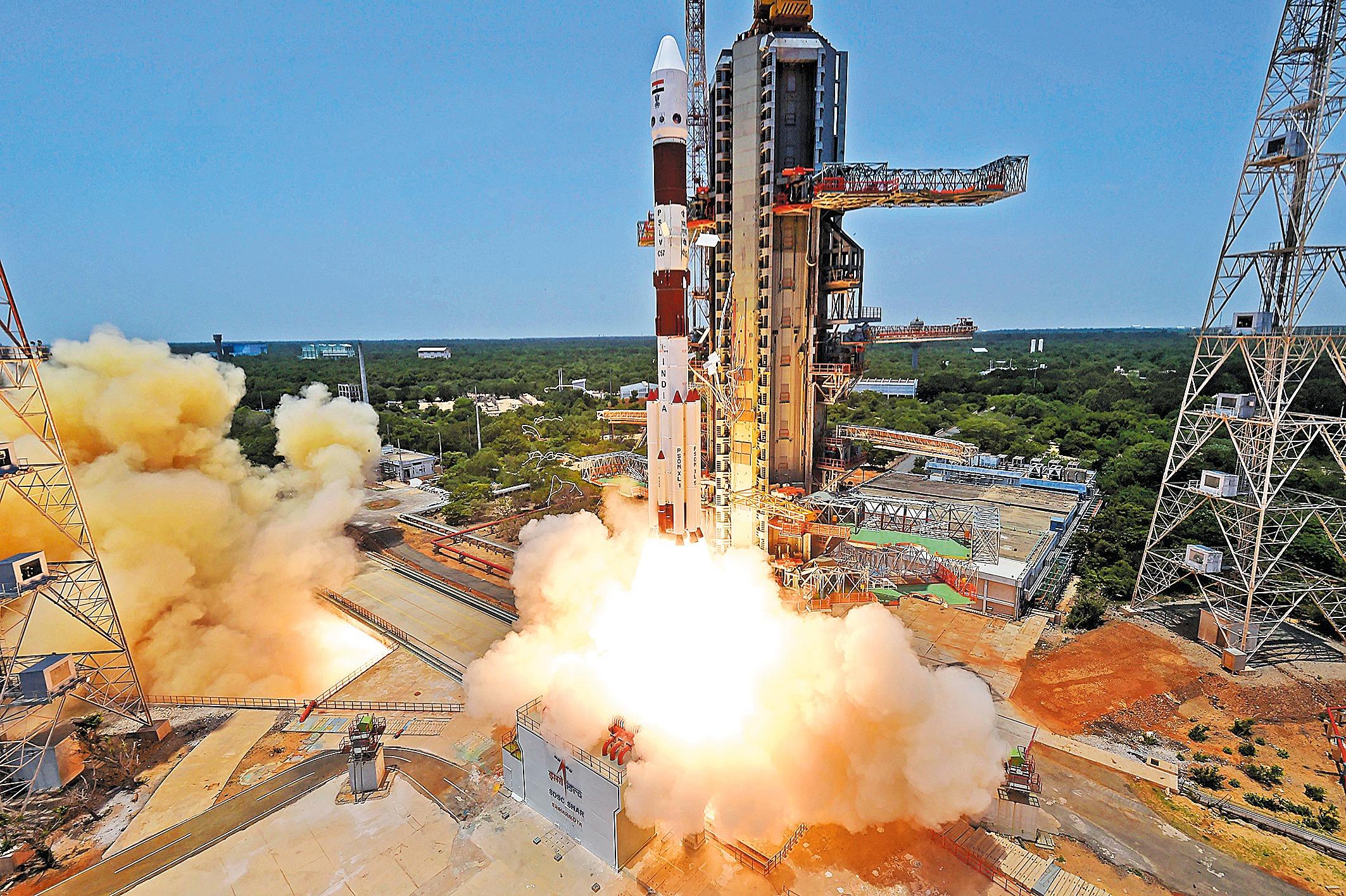Solar mission marks new milestone in nation’s space efforts, say experts
 The satellite Aditya-L1 is lifted off on board a launch vehicle in Sriharikota, India, on Sept 2. (PHOTO / AP)
The satellite Aditya-L1 is lifted off on board a launch vehicle in Sriharikota, India, on Sept 2. (PHOTO / AP)
India’s success in launching its solar mission, less than two weeks after an uncrewed landing near the moon’s south pole, holds a deep significance not just for the country but also for developing nations, say analysts.
Swaran Singh, professor for diplomacy and disarmament at Jawaharlal Nehru University in New Delhi, said the launch of the Aditya-L1 solar mission and Chandrayaan-3’s landing on the moon’s south pole are milestone achievements in India’s space exploration.
“It especially demonstrates the genius of India’s scientists who have ... come to be known for their cost-effective missions that must inspire nations of the Global South,” he said, adding that these countries can now aspire to explore the frontiers of science and hope to build partnerships with India.
On Sept 5, Aditya-L1 successfully underwent a second earth-bound maneuver, the Indian Space Research Organisation (ISRO) said.
Earlier, on Sept 2, the ISRO confirmed that India had launched its maiden solar mission, Aditya-L1, onboard the PSLV-C57 rocket at Satish Dhawan Space Centre in Sriharikota, Andhra Pradesh state.
“The Aditya-L1 will be the first Indian space-based observatory-class solar mission to unlock the mysteries of the sun,” the ISRO had said earlier.
Also on Sept 2, the moon rover from the Chandrayaan-3 spacecraft was put on a sleep mode after completing its assigned tasks, the ISRO said.
The spacecraft was launched on July 14 and the lander, Vikram — which carried the rover called Pragyan — landed safely on the lunar surface on Aug 23.
The rover then traversed a total distance of 100 meters on the lunar surface over 11 days.
As for the Aditya-L1, it separated from the launch vehicle about an hour after the rocket blasted off. Minister of State for Science and Technology Jitendra Singh and ISRO Chairman S. Somanath were among those at the launch event.
The first earth-bound maneuver of Aditya-L1 — said to be one of the longest Polar Satellite Launch Vehicle missions — was successfully performed on Sept 3.
The satellite will undergo two more earth-bound orbital maneuvers before being placed in the transfer orbit towards the Lagrange point L1, nearly 1.5 million kilometers from earth.
According to ISRO, the next maneuver is scheduled for Sept 10 around 2.30 am (local time).
The mission will take 125 days to reach its destination, Lagrange Point 1, to observe the sun without any interruptions, astrophysicist Sandip Chakrabarti said.
V. Adimurthy, former associate director at Vikram Sarabhai Space Center in India and former dean of R&D at Indian Institute of Space Science and Technology, said it is another complex mission.
Earlier, Chandrayaan-3 had detected signs of the presence of oxygen and several minerals on the lunar surface, the ISRO said on Aug 29.
The presence of minerals, including iron, titanium, manganese, silicon, chromium, calcium, aluminum and sulfur, on the lunar surface was discovered by the Laser-Induced Breakdown Spectroscope (LIBS) onboard the Pragyan rover.
“In-situ scientific experiments continue … Search for Hydrogen (H) is underway,” the ISRO said.
The LIBS instrument was developed at the Laboratory for Electro-Optics Systems/ISRO in the southern city of Bengaluru.
Shantanu Bhowmik, professor from the department of aerospace engineering at Amrita Vishwa Vidyapeetham University, said that by studying how long the sun will continue to give heat, climate mitigation activities can take place because the lasting power of the ozone layer can be determined.
The mission is particularly complex because the spacecraft has to cross various radiation belts to reach the sun’s orbit, Bhowmik said.
The cost of the solar mission — which is fitted with a solar panel to draw energy from the sun for its normal functioning — is estimated to be about $48.36 million.
Referring to Chandrayaan-3’s soft landing success, astrophysicist Sandip Chakrabarti said: “It is the beginning of some significant activities in the future. The activities include science of the moon, and from the moon. It is a gateway to the outer world.”
Chakrabarti, who is the director of the Indian Centre for Space Physics, Kolkata, added that the feat is not only a glorious achievement for India, but also puts it in the elite group of nations in space science.
India is now the fourth country in the world to have achieved the feat of soft landing on the moon.
“The successful landing will inspire every citizen in India. No future regulation (regarding) the moon can be made without the concurrence of India. So, it is a huge thing for India,” Chakrabarti said.
Xinhua contributed to the story.
Aparajit Chakraborty and Arunava Das are freelance journalists for China Daily.
Contact the writers at vivienxu@chinadailyapac.com



